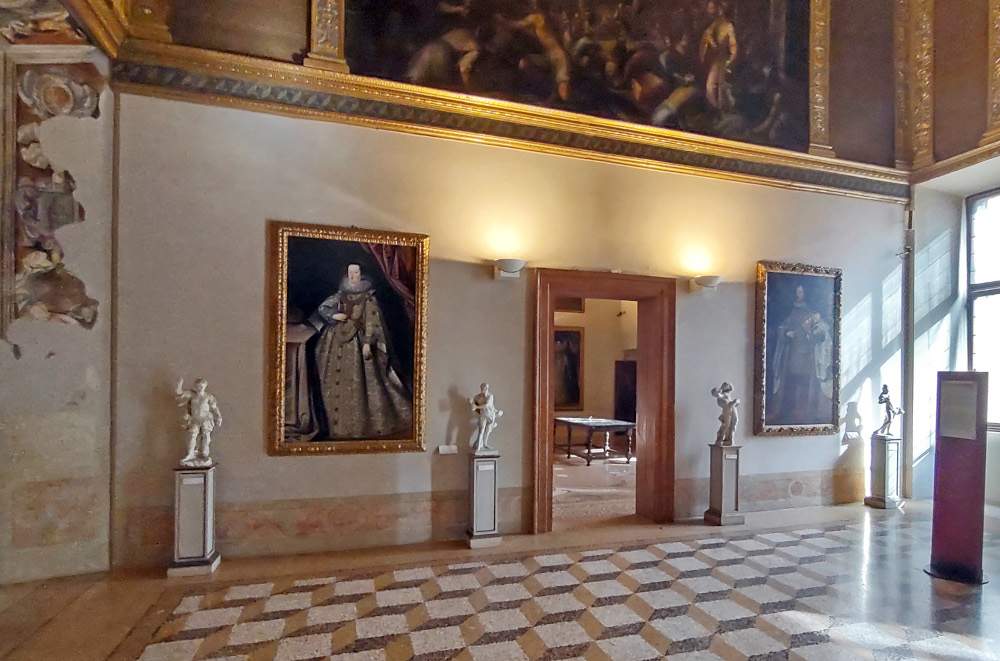Discovered the author of six Baroque statues of mythological subjects currently preserved in the Sala del Labirinto (Labyrinth Room ) in Corte Vecchiain the Ducal Palace in Mantua, but coming from the palace of the Pico della Mirandola: it is the Carrarese artist Andrea Baratta.
An important group of paintings, sculptures and furnishings was transferred in 1716 from Mirandola to Mantua at the behest of the Habsburgs. The intent was to furnish the Ducal Palace, elected as the representative seat of the new rulers. The complex had been emptied of many of its furnishings and works of art by the recent flight to Venice of the last member of the Gonzaga-Nevers, Duke Ferdinand Charles, accused of “felony” by Emperor Joseph I.
Thus countless works arrived in Mantua, including large canvases of the Venetian school by Sante Peranda and Jacopo Palma il Giovane currently on display in the Appartamento di Vincenzo in Corte Vecchia. While these works have been well studied in the past, the mystery of the six statuettes depicting ancient deities had not yet been unraveled. They are Carrara marble sculptures each about 75 centimeters tall; two of them are signed’Andre B’. Identifying this initials with the personality of Andrea Baratta, an artist from Carrara, was seventeenth- and eighteenth-century Venetian sculpture scholar Maichol Clemente, who is about to complete a scholarly paper of his own on the subject.
“The research,” says Clemente, “started from the study of a statue attributed in the past to the Venetian Francesco Bertos and which in truth is the work of Andrea Baratta himself. Since it is a reduction with variants of the large group documented to the Carrarese preserved in Sassuolo, depicting Neptune and Amphitrite, the language expressed led me later to reconsider also the statues in the Ducal Palace in Mantua. These, in fact, present a series of formal addendums (from draperies to the complexion of the body to other more minute details) that well respond to and correspond to Baratta’s style. A fact that obviously also finds inescapable confirmation in the inscription ’Andre B’ readable on two works in the same series. Thanks to the availability of director L’Occaso, and the work of rearrangement and enhancement of the collections initiated by the Museum, it will be possible to have new photos that will therefore allow me to better conclude my in-depth study.”
The sculptures are currently stored in the Labyrinth Room in Corte Vecchia. In order to enhance both the pieces that were the subject of the recent discovery and two extraordinary busts by Lorenzo Ottoni, which also came from Mirandola, the layout of the room is being updated and thelighting system will also be revised. Ottoni was a pupil of Ercole Ferrata and heir, therefore, to the virtuosity of Gian Lorenzo Bernini. Baratta also worked in Rome in his youth and roughly between 1685 and 1690 was in the service of the Este family, dukes of Modena.
 |
| Ducal Palace Mantua, author of six Baroque statues with mythological theme discovered: he is Andrea Baratta of Carrara |
Warning: the translation into English of the original Italian article was created using automatic tools. We undertake to review all articles, but we do not guarantee the total absence of inaccuracies in the translation due to the program. You can find the original by clicking on the ITA button. If you find any mistake,please contact us.